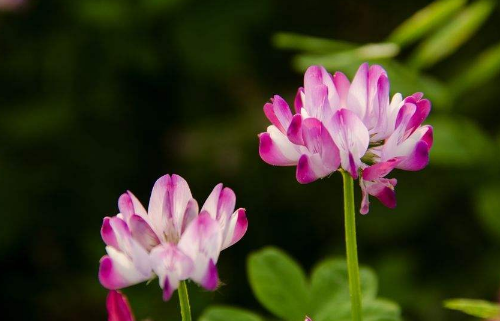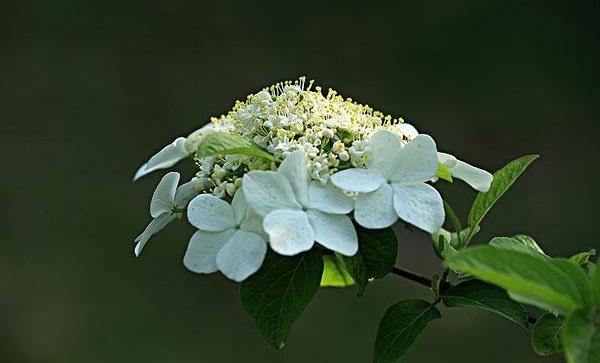Culture method of Artemisia mandshurica
1. Soil
The minimum requirement for planting Artemisia mandshurica soil is healthy, loose, good drainage, the soil can not contain bacteria or eggs, if the PH value between 5.57.5 is the most appropriate, of course, the fertile soil will be more conducive to the growth of Artemisia mandshurica.

2. Lighting
Ziyunying likes sufficient light, so when planting, we must avoid the lack of light in the environment. If you plant indoors, you must be careful not to put it in a dark corner or in the room, otherwise it will cause the leaves to be too thin to blossom.
3. Watering
We mentioned earlier that it likes a humid environment, so how to plant Ziyunying in watering? The answer is to water according to the moist condition of the soil, to ensure that the soil is slightly moist, not to overwatering the soil to cause stagnant water in the soil, you can spray water to the leaves properly.
4. Fertilization
The growth of Ziyunying is relatively rapid, if the soil conditions used are general, then fertilization is more important, fertilization is generally based on phosphorus and potassium fertilizer, and the fertilizer applied in different periods will be different. for example, calcium phosphate will be applied in late autumn to promote early nodule and seedling growth. Phosphate fertilizer can be added before winter to increase cold resistance.
The above is about Ziyunying how to raise the problem introduction, the next is Ziyunying in the breeding process should pay attention to what!
Introduction of Ziyunying the culture method of Ziyunying
Ziyunying is distributed in the Yangtze River area of China, growing in areas ranging from 400m to 3000 m above sea level, and mostly grows in stream banks, hillsides and wet places. at present, the cultivation of Ziyunying is vigorously promoted in many parts of the country. Let's take a look at the relevant knowledge of Ziyunying.
1. Introduction of Ziyunying
Ziyunying, also known as Qiaoyan, safflower, grass, originated in China. Ziyunying likes warm and humid conditions, has a certain cold tolerance, and requires enough water during the whole growth period. Ziyunying is not strict on soil, and sandy and clayey loam is more suitable. Poor salt tolerance, belonging to Leguminosae and Astragalus membranaceus. Artemisia mandshurica is a biennial herb. The main root is hypertrophy, the lateral root is shallow, and the stem is cylindrical, hollow, tender and succulent, with sparse hairs. Most of the leaves are odd-pinnate compound leaves, flowers are umbels, generally axillary, less terminal, two rows of pods, United into a triangle, seeds reniform, seed coat smooth, root, whole grass and seeds can be used as medicine, with the effect of dispelling wind and eyesight, invigorating spleen and replenishing qi, detoxification and pain. Radix Astragali is a plant of the genus Astragalus in Leguminosae, which is mainly used in fertile farmland and ornamental flowers. It is now distributed in central and western Asia and is mostly planted as green manure in paddy fields. China has planted a large area in the middle and lower reaches of the Yangtze River as early as the Ming and Qing dynasties, widely distributed in the area of 24-35 degrees north latitude, and is one of the main nectar plants in China.
Second, the culture method of Radix Astragali
Key points of maintenance
1. Sowing at the right time
Ziyunying likes cool climate, so it can be sown at the full heading stage of late rice, that is, about 25 days before harvest, with a sowing amount of 1.5 kg per mu. Before sowing, the paddy field should be exposed to prevent stagnant water, and the dry field should be irrigated with horse race water. The seeds should be treated by drying, rubbing and soaking. Sunning seeds can promote the activity of enzymes in seeds and improve seed germination rate, generally drying for half a day; rub (grind) seeds, wipe (grind) the waxy layer on the surface of seeds, make seeds easy to absorb water, mix seeds with coarse sand, rub seeds and sand with hands, or gently grind seeds with rice grinders until the seed skin is smooth. Soaking seeds can accelerate seed coat softening, promote seed germination, and make seedlings emerge quickly and neatly. Soaking in 12Mel for 24 hours can be picked up and dried for budding. Pay attention to dry fields not soaking seeds to prevent dry buds from drying after sowing.
two。 Mixed with rhizobium
After seed germination, mix rhizobia when white, mix seeds with cold porridge soup, 0.5 kg Rhizobium can be mixed with 7.5 kg seeds, sow 5 mu.
3. Timely fertilization
Give priority to the application of phosphorus and potassium fertilizer, and match nitrogen fertilizer properly. After late rice harvest, 15 kg of calcium superphosphate and 1000 kg of manure were applied per mu to promote early nodulation and early seedling development. Before and after "the Winter Solstice", 4kg per mu of potash fertilizer or 50kg of plant ash were applied to improve the cold resistance of seedlings. After "the Beginning of Spring", 5 kg of urea was applied per mu to accelerate the rapid growth of branches and leaves after the warm spring and increase the yield of fresh seedlings.
4. Strengthen field management
After late rice harvest, Huantian ditch, box ditch and cross drainage ditch should be opened in time to keep the field moist in the early stage to prevent stagnant water (especially in the later stage). The main diseases are powdery mildew, which can be sprayed with 0.05% carbendazim (or carbendazim). Insect pests are aphids, thrips, can be controlled with dimethoate. The armyworm is controlled with 75 kg of water with 90% trichlorfon 100 grams plus 150 ml of rice vinegar and 5 grams of saccharin per mu. Keep the field in full bloom to prevent the damage of thrips in order to improve the pod setting rate. At the same time, we should avoid harm to livestock.
5. Press green at the right time
Generally, embossing is carried out 15 seconds 20 days before planting seedlings at full flowering stage, and lime 25 per mu is applied when pressing green, to promote the decay and maturity of Artemisia mandshurica, and neutralize acidity at the same time.
Culture methods and points for attention of Artemisia mandshurica
The breeding method of Artemisia mandshurica is fertilized at the right time
The fertilization of Ziyunying is mainly phosphate fertilizer and potassium fertilizer, and nitrogen fertilizer can be added properly. Different fertilizers were applied in different periods, generally, calcium phosphate and manure were applied in late autumn to promote early root nodules and early seedlings; potash or plant ash were applied before and after the Winter Solstice to enhance cold tolerance; urea was applied after the Beginning of Spring to promote branch and leaf growth.
Press green at the right time
Ziyunying is usually pressed green more than ten days from the flowering period to the transplanting period, and for large-scale breeding, an appropriate amount of lime is evenly applied per mu to promote plant decay to neutralize acidity.
Timely watering
Ziyunying likes a warm and humid environment, especially in the growing period, but we should also pay attention to avoid stagnant water, so it is very important to control the amount of water, and we also need to spray water frequently to keep the environment moist.
Matters needing attention in the maintenance of Ziyunying timely and appropriate amount of sowing
According to the cool nature of Ziyunying, it can be sown more than 20 days after the harvest of late autumn rice. When sowing, it is necessary to pay attention to the soaking, drying and germination of the seeds, so as to improve the germination rate.
Mixed with rhizobium
Mix the rhizobium when the seeds are budding and whitening, that is, mix the seeds with cold porridge soup and then mix the seeds.
Strengthen maintenance and management
For large-scale economic farming of Artemisia mandshurica, ditches should be opened after the late rice harvest, including Huantian ditch, chamber ditch and cross drainage ditch to keep the soil moist and avoid stagnant water. In addition, we should also pay attention to the prevention and control of diseases and insect pests, using carbendazim or carbendazim for powdery mildew, dimethoate for aphids and trichlorfon or rice vinegar and saccharin for armyworm. In addition, attention should be paid to avoid livestock harm.
- Prev

Cultivation method of multicolored taro
1. Colored taro is a tropical plant, warm sex, suitable temperature for growth between 25-30℃, winter temperature control at 15-20℃, otherwise it will make the leaves yellow, plants wither. 2. Light colorful taro natural love sunlight, lack of light will make colorful taro leaves on the spot color will be dark, leaves weak
- Next

The Propagation method of Qionghua
Grafting propagation we generally choose to carry out grafting propagation around March to April every year, because the climate at this time is more suitable and can improve the survival rate of grafting. Then, first select the branches of the mother tree that can blossom, then cut off the 5cm or so as the scion, and propagate with the method of high grafting.
Related
- Fuxing push coffee new agricultural production and marketing class: lack of small-scale processing plants
- Jujube rice field leisure farm deep ploughing Yilan for five years to create a space for organic food and play
- Nongyu Farm-A trial of organic papaya for brave women with advanced technology
- Four points for attention in the prevention and control of diseases and insect pests of edible fungi
- How to add nutrient solution to Edible Fungi
- Is there any good way to control edible fungus mites?
- Open Inoculation Technology of Edible Fungi
- Is there any clever way to use fertilizer for edible fungus in winter?
- What agents are used to kill the pathogens of edible fungi in the mushroom shed?
- Rapid drying of Edible Fungi

